Here’s How to Do SEO Campaign Management for the Best Results
Download the SEO Campaign Bundle
This post is packed with practical tips to help you plan and manage an entire SEO campaign. In order to help you apply what you learn, we’ve put together this free downloadable bundle of useful templates and other resources. You’ll get:- An On-Page SEO Checklist to make sure every piece of content you publish is properly optimized.
- An SEO Content Strategy Template to figure out what you’ll publish (and why).
- An easy-to-follow SEO Copywriting Template to simplify and organize your content writing process.
- A User Persona Worksheet to help you learn more about what your audience is searching for.
What is SEO?
SEO is known as Search Engine Organization and it is a term and strategy that refers to the visibility of a website in regards to search queries. Websites, therefore, engage in various SEO campaigns so they can rank highly in search engine results pages (SERPs). Now, SEO campaign management refers to strategic steps and actions taken to incorporate SEO elements into your website content. This, in turn, influences your website’s rankings and increased the likelihood of someone finding your business.Recommended Reading:
The Most Massive SEO Copywriting Guide That Will Make Your Traffic Soar
Things to Consider When Planning SEO Campaigns
Every marketing strategy requires planning… SEO campaign management included. Here is a foolproof process to help you kick off your campaign and see results.Understand Your Audience
SEO, in a lot of ways, is like psychology. You have to understand your audience, what they are looking for, what terms they use to find it and what makes them tick. Once you’re done, you should have a document that looks like this: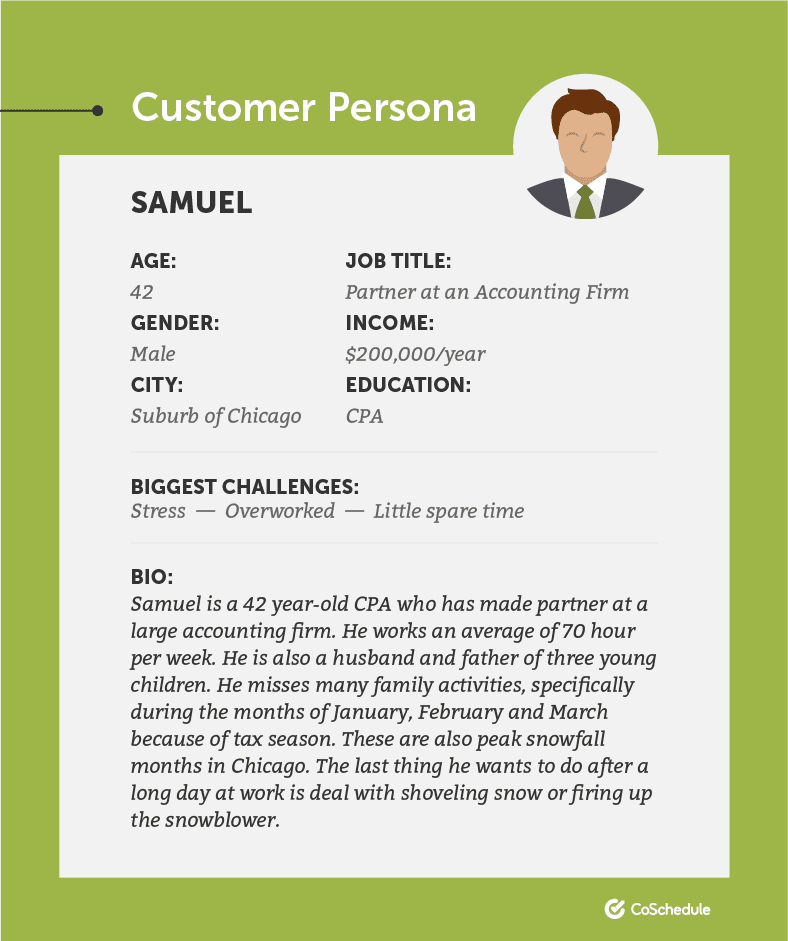 The point of your persona is to understand…
The point of your persona is to understand…
- Who your customers are.
- What their challenges are.
- How your company can solve their problems.
- What your customers value.
- What motivates them.
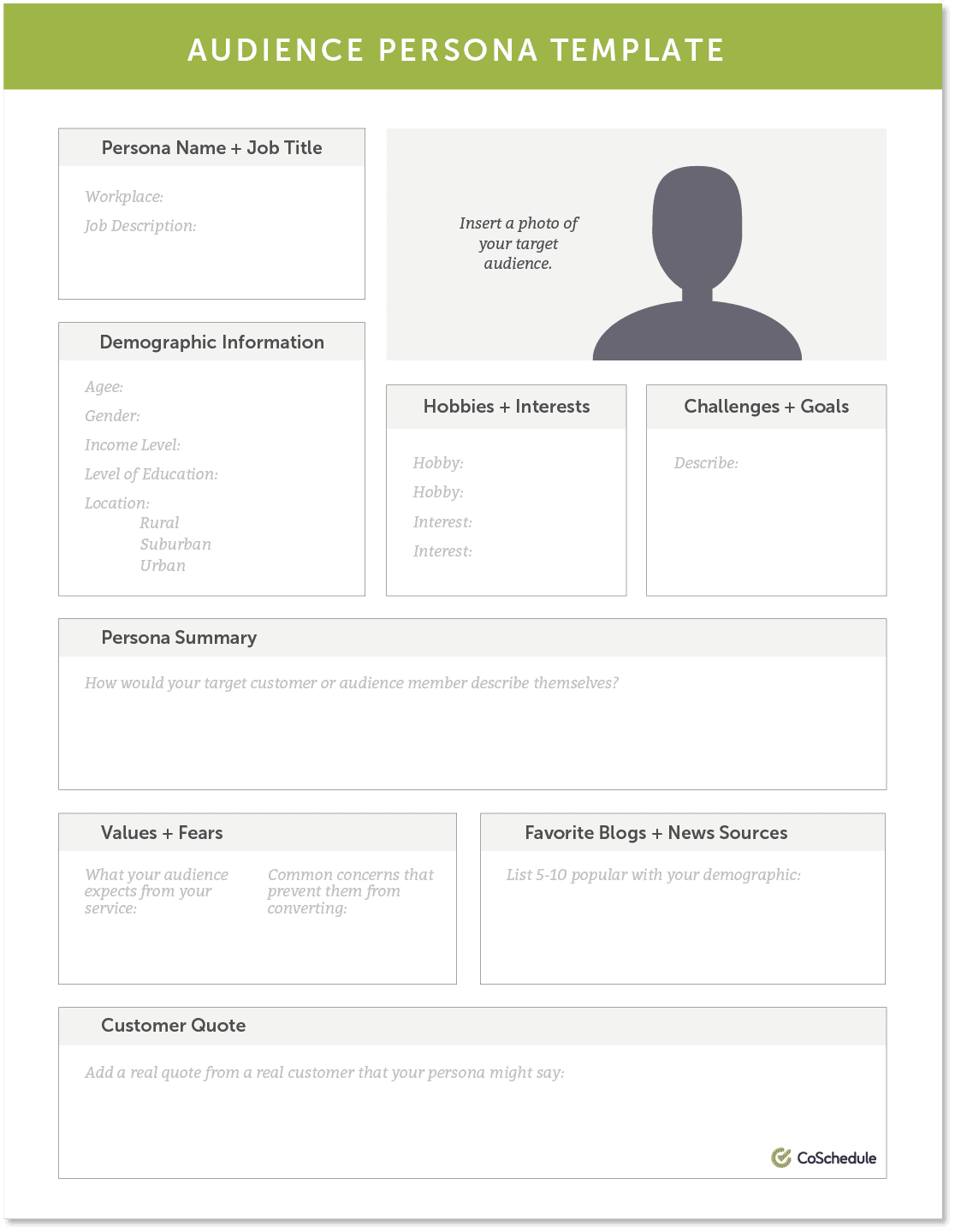
Recommended Reading:
Spark Your User Persona To Life With These 9 Important Tools
Consider the Technical Aspects of Your Website
If you already have a website but have not yet considered implementing an SEO campaign, it is important to consider whether the site is technically proficient enough to perform well in organic search. For example, if the website runs on an outdated platform, runs slowly, or is not suitable for mobile users, it is unlikely to appear higher in search engine results. Why? When a user enters a query into a search engine, it is important that they are offered the best possible responses from authoritative and trusted websites. Search engines such as Google have made it clear over the years that websites should offer a good user experience in order to perform well in its search results.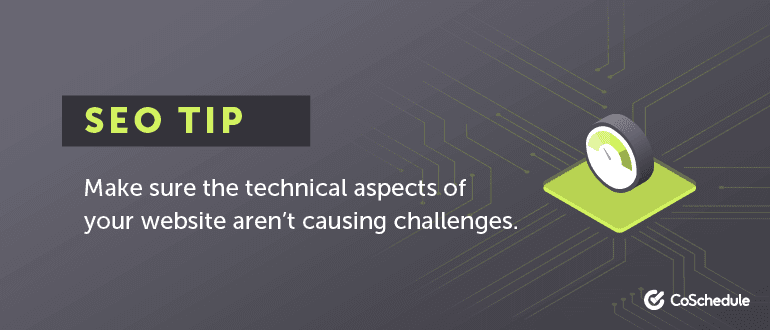
Technical SEO Tools for Your Website
How will you know if the technical aspects of your website are up-to-snuff? You can use a range of free tools provided by Google to check the usability of your site. For instance, the PageSpeed Insights tool helps you understand how fast particular pages are loading and will provide you with insights into issues that it has discovered, as well as how to fix them.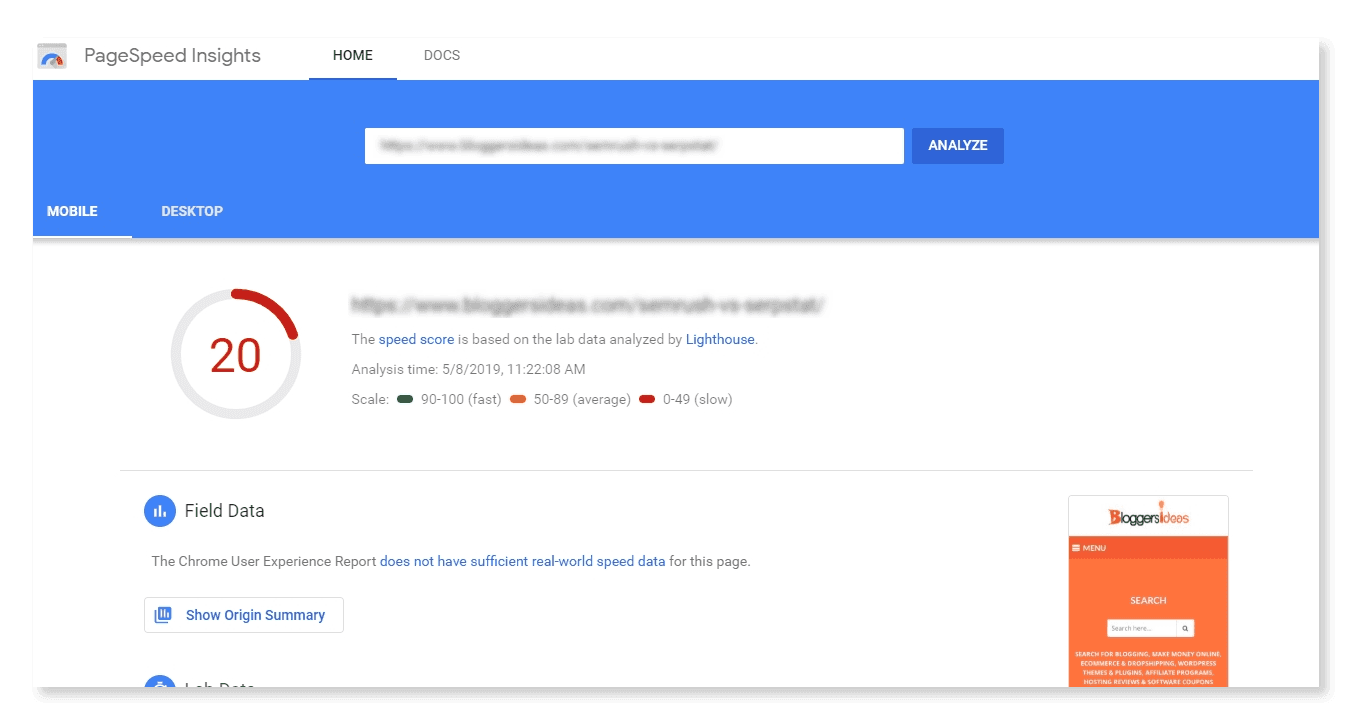 Another useful tool is the Mobile-Friendly Test, which will show you how your site responds to mobile users. Again, the tool will highlight areas that need improvement, as well as offering guidance on how to do so.
Another useful tool is the Mobile-Friendly Test, which will show you how your site responds to mobile users. Again, the tool will highlight areas that need improvement, as well as offering guidance on how to do so.
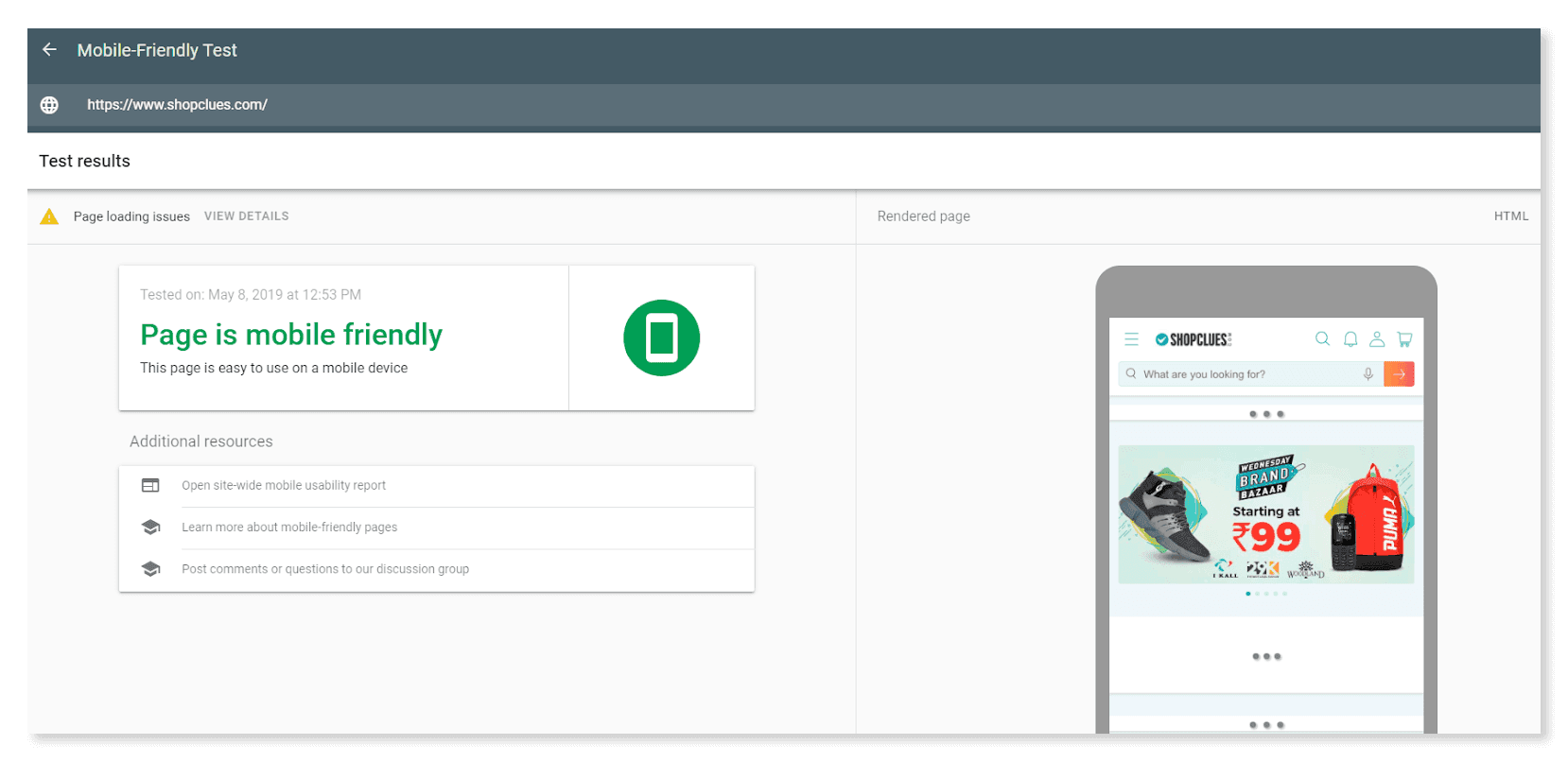 Although these two tools are incredibly useful for site owners, to get the best understanding of your website, you should look into carrying out a full technical audit so that you can inspect your site from a granular level.
A technical audit usually covers the following items:
Although these two tools are incredibly useful for site owners, to get the best understanding of your website, you should look into carrying out a full technical audit so that you can inspect your site from a granular level.
A technical audit usually covers the following items:
- Findability
- Architecture
- URL Analysis
- “On Page” Checks
- SEO Equity
- GSC Audit
- Link Issues
- Social Analysis
Set an SEO Campaign Workflow
Getting started on this journey to obtaining the number one search result on any keyword, starts with a comprehensive workflow. This outlines all the necessary steps to ensure to tasks are missed and everything is implemented consistently. A typical SEO campaign management workflow looks like this:- Find your target keywords.
- Check your website’s ranking.
- Detect onsite issues and fix them.
- Optimize your landing pages.
- Eliminate harmful links.
- Build quality links.
- Monitor search engine rankings.
- Fix redirects.
- Check for linking problems.
- Find unlinked mentions and turn them into links.
- Find guest blogging opportunities.
Analytics and Tracking
When thinking of how to manage SEO campaigns, tracking should be a top priority. Tracking allows you to know your reach and performance. It is a sure-fire way to know that your SEO campaign is actually working.Keyword Ranking for Your Campaign
Keyword ranking is incredibly important. Over time, you will see these keywords fluctuate in their search engine placement. As you’re probably aware, the higher that your pages rank for specific keywords, the more traffic your website will receive. You can implement a number of strategies to help improve your keyword ranking, including looking at long-tail keyword rankings. Generally, long-tail keywords are less common queries that are entered into a search engine. Say you sell skateboards, a short-tail keyword would be “buy skateboard”, whereas a long-tail keyword could be “black skateboard under $30.” Despite being less common, long-tail keywords can offer great advantages because they are less competitive and easier for your site to rank on.
Additionally, they’re more targeted. The person searching for the term knows exactly what they are looking for, so they are more likely to actually purchase what they are searching for.
Despite being less common, long-tail keywords can offer great advantages because they are less competitive and easier for your site to rank on.
Additionally, they’re more targeted. The person searching for the term knows exactly what they are looking for, so they are more likely to actually purchase what they are searching for.
Keyword Ranking Tools for Your SEO Campaign
Here’s a list of some special SEO tools can help you to find appropriate keywords:Traffic and Conversions
By measuring the traffic on your site, you can get a full understanding on how your SEO campaign is performing. Although monitoring your keywords is incredibly important, you also need to know how many people are finding your website, which parts of the website they are looking at, and where they are coming from. By analyzing your traffic, you can discover which elements of your SEO campaign are succeeding, as well as which ones are not. For instance, you might find that one of your pages is receiving lots of traffic, but is failing to offer conversions. This is called the traffic trap. By studying why this might be, you can consider improving the page so that it offers more value to users. Many tools (such as Google Analytics, SimilarWeb, Clicky) offer site owners the ability to compare their site traffic to previous years and months, which is incredibly helpful for sites that are affected by seasonal changes and can help them prepare for both quieter or busier times.
Many tools (such as Google Analytics, SimilarWeb, Clicky) offer site owners the ability to compare their site traffic to previous years and months, which is incredibly helpful for sites that are affected by seasonal changes and can help them prepare for both quieter or busier times.
Inbound Links for SEO
Keeping an eye on your inbound links is important for understanding how your SEO campaign is performing. Links tend to indicate to search engines how popular a website is, as well as how authoritative it might be in a given industry or vertical. For instance, a site that has a link pointing to it from the BBC will offer a positive trust signal to search engines.
It’s important to remember that Google and other search engines are very clear that links should never be bought in order to manipulate the authority of a website.
You can read more about this in this Google Webmaster guide.
This means that websites must, therefore, earn their links naturally, and this can be done through content marketing and PR campaigns, as well as signing up to industry magazines and directories (if relevant).
For instance, a site that has a link pointing to it from the BBC will offer a positive trust signal to search engines.
It’s important to remember that Google and other search engines are very clear that links should never be bought in order to manipulate the authority of a website.
You can read more about this in this Google Webmaster guide.
This means that websites must, therefore, earn their links naturally, and this can be done through content marketing and PR campaigns, as well as signing up to industry magazines and directories (if relevant).
 Keeping an eye on your links also helps you understand how popular your site is among your target audience, and whether there are certain elements of it that people find appealing.
For instance, if you have written a piece of supporting content in your blog section that appears to be receiving links, you could consider similar articles and pieces along the same theme and style.
To identify such articles, you should use Backlink Analysis tools. They help you to find backlinks to all your domain or specific URL. You can use Majestic, Linkody, Serpstat, Ahrefs.
Keeping an eye on your links also helps you understand how popular your site is among your target audience, and whether there are certain elements of it that people find appealing.
For instance, if you have written a piece of supporting content in your blog section that appears to be receiving links, you could consider similar articles and pieces along the same theme and style.
To identify such articles, you should use Backlink Analysis tools. They help you to find backlinks to all your domain or specific URL. You can use Majestic, Linkody, Serpstat, Ahrefs.

Post Engagement for SEO
It goes without saying that not every piece of content will be successful, so it is important to measure post engagement so that you can have a greater understanding of what types of content are being shared and well received by your audience. Articles and posts with higher levels of post engagement send positive signals to search engines and indicates that the post in question is useful to audiences. This should result in pages getting more exposure in search results. Although Google has stated that social engagement is not a ranking factor in its search results, some evidence has been shown that there is some relationship with posts ranking better if they have been shared across different social media platforms. Google also indexes pages quicker if they appear in Twitter posts. You can monitor your posts’ engagement with the following tools: CoSchedule, Oktopost, Buffer, HootSuite, Google Analytics.
Page Ranking for SEO
By monitoring how well your pages are doing within the search results, you can review which pages might need improvements. When it comes to pages that are falling down the rankings, view which of your competitors are doing better and analyze their pages to try and get an understanding of why search engines are choosing their pages over yours. To make such an analysis, you can use SEO tools: Serpstat, Moz Rank Tracker, SEMrush. In all the above areas, you have to be consistent. To attract natural traffic, you have to be patient and to take turns in consciously building your campaign workflow.
In all the above areas, you have to be consistent. To attract natural traffic, you have to be patient and to take turns in consciously building your campaign workflow.
Does an SEO Campaign Have to Be Technical?
Although in the past there were less technical considerations that site owners had to implement, due to the fact that technology is becoming more advanced, it is becoming increasingly important that a website is technically proficient for an SEO campaign success.Site Speed is Important for SEO
Although in the past people would only access the internet via desktop computers, since the majority of internet traffic is now through mobile devices, how fast your site loads to users is a critical factor on how well it will perform. Google, for instance, has stated that site speed is an important factor for desktop devices for a number of years, and recently announced that this is now the case for mobile devices. This means that sites must now put great consideration into how their sites load and how mobile users can interact with them. That said, Google states that: “The intent of the search query is still a very strong signal, so a slow page may still rank highly if it has great, relevant content.” If a site redesign is not an option, you can look at other ways to improve page load times.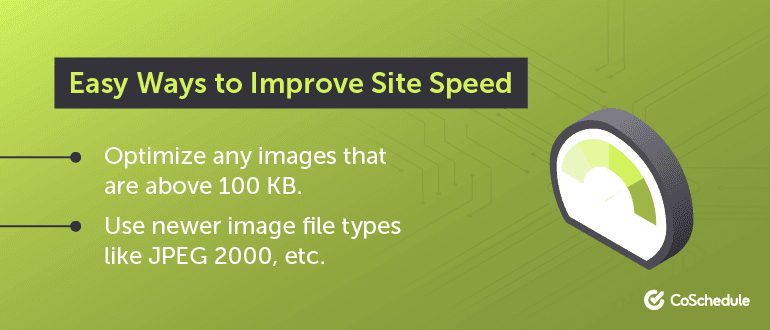 For example, you could investigate the images on your site and consider optimizing any that are above 100 KB in size. This is particularly important as large image files can considerably slow loading times.
You could also consider using newer image file types that can be optimized to a greater degree. For instance, Google recommends using next-gen image formats, including JPEG 2000, JPEG XE, or WebP.
For example, you could investigate the images on your site and consider optimizing any that are above 100 KB in size. This is particularly important as large image files can considerably slow loading times.
You could also consider using newer image file types that can be optimized to a greater degree. For instance, Google recommends using next-gen image formats, including JPEG 2000, JPEG XE, or WebP.
Cater to Mobile Users for Better SEO
As stated in the above, how well mobile users can interact with the mobile version of your site is incredibly important to how well it will perform in search results. In April 2015, Google made the announcement that the mobile usability of a website now plays a crucial role in how well it performs in its search results. More recently, Google also stated that it was going to start prioritizing mobile versions of sites over desktop ones, which means that Google will now crawl and index your site from a mobile perspective. Previously, the search engine had used the desktop version of a website to crawl, index, and rank it, which proved problematic when the mobile versions weren’t as advanced. You can check if your site is being crawled and analyzed from a mobile perspective by analyzing crawl bot activity on your site, which you will find in your server log files.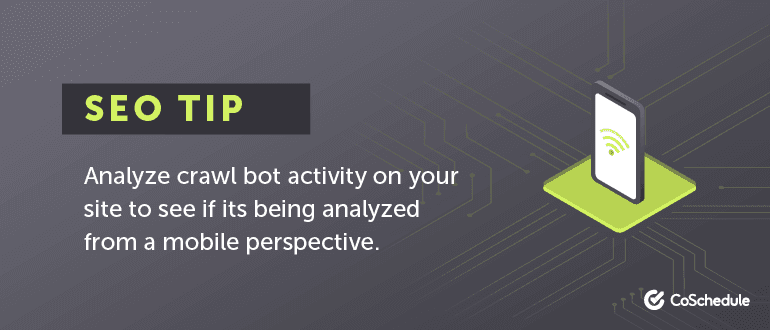 There are a number of things that you should consider doing to ensure that your site is mobile friendly, including:
There are a number of things that you should consider doing to ensure that your site is mobile friendly, including:
- Ensuring that there is parity between mobile and desktop, looking into text, images, videos, structured data, and internal links.
- Making sure that robots.txt files are validated.
- Checking whether your servers have the capacity to handle changes in crawl rates.
- Monitoring and analyzing indexation status.
Your Site Must Offer Users Security
Now more than ever, it is critical that websites can offer a good level of security or those that use them, and search engines have been incredibly clear that they require this. For instance, Google offers a very small ranking boost for sites that are on HTTPS.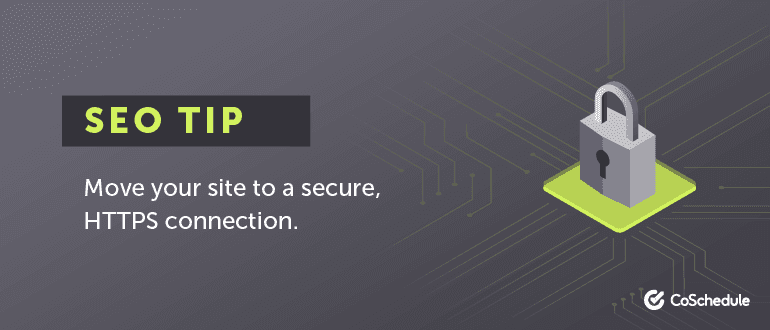 What’s more, Google’s Chrome browser will warn users against visiting sites that are still on HTTP, as any information being transferred to and from a user can be read by hackers.
This means that if a user visits a site without a secure connection, they will be warned by the browser not to enter it.
If your site is still on HTTP, it means that not only will you find yourself outranked by competitors on HTTPS, but it is also highly likely that your traffic will drop as a result.
You can find out how to implement HTTPS on your site in this guide, as well as how to follow best practices advised by Google.
There is a range of precautions that you can take to ensure that you are making your website as safe as possible, including:
What’s more, Google’s Chrome browser will warn users against visiting sites that are still on HTTP, as any information being transferred to and from a user can be read by hackers.
This means that if a user visits a site without a secure connection, they will be warned by the browser not to enter it.
If your site is still on HTTP, it means that not only will you find yourself outranked by competitors on HTTPS, but it is also highly likely that your traffic will drop as a result.
You can find out how to implement HTTPS on your site in this guide, as well as how to follow best practices advised by Google.
There is a range of precautions that you can take to ensure that you are making your website as safe as possible, including:
- Using strong passwords.
- Getting an SSL certificate from a trusted provider.
- Ensure that your site’s plugins are updated.
- Making sure that your software is updated.
- Ensuring that you have a strong firewall.
- Monitoring your site on a regular basis.
Structured Data is a Great Way to Improve Your Visibility
Put simply, structured data is a form of markup that is implemented in the code of a website and provides search engines with specific pieces of information about a page, site, or organization. Although structured data is not mandatory for a website, it is, however, a great way for your site to earn traffic through other areas of search outside of the traditional results pages. A form of markup, structured data is implemented within a page’s coding (out of view from regular users), and it is a way of offering more information to search engines. Sites with structured data implemented on their websites can benefit from new areas of search, including rich snippets, which are results that offer more information outside of the standard results.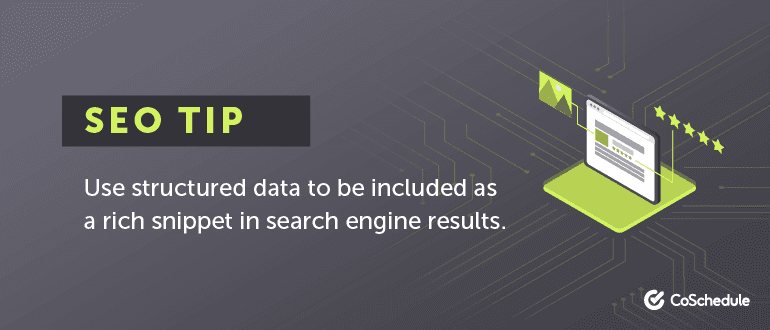 Appearing in a rich snippets result can be highly beneficial, especially if you are included for a popular search term.
It is important, however, that structured data is implemented correctly and with great care so that your site can benefit from it.
Google has issued a series of guidelines for structured data:
Appearing in a rich snippets result can be highly beneficial, especially if you are included for a popular search term.
It is important, however, that structured data is implemented correctly and with great care so that your site can benefit from it.
Google has issued a series of guidelines for structured data:
- The data must be up to date.
- The content that the structured data is representing is original.
- The structured data markup should not visible to users.
- The markup is not misleading or irrelevant.
- The content does not promote pedophilia, bestiality, sexual violence, or violent or cruel acts.
- That the content does not promote illegal activities or services.
The Benefits of an SEO Campaign
It goes without saying that without an intelligent SEO campaign in place, a website would not be successful in its search performance. Whether you pay for SEO services, or you implement a campaign yourself, SEO is an incredibly important arm of marketing that should not be overlooked.SEO Campaigns Provide ROI
As we’ve discussed, an intelligent and trackable SEO campaign can offer great results, regardless of what industry you’re in or how your website makes money. Over 90% of traffic goes to page one. About 60% goes to websites in the top 3 spots. If you want to drive traffic to your site, and increase sales, you’ve got to land on the first page.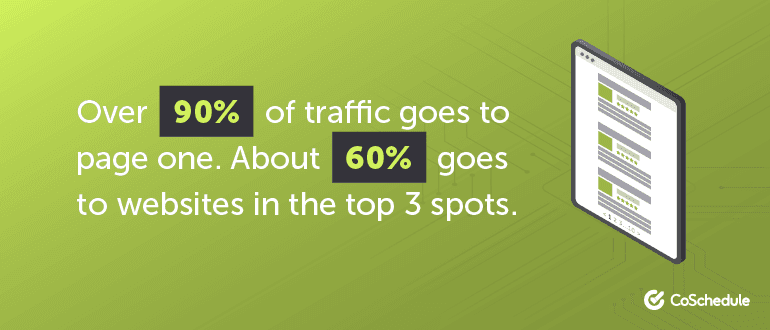 By tracking every aspect of your strategy, you can get a comprehensive understanding of the results that you are achieving, and where your conversions are coming from.
By tracking every aspect of your strategy, you can get a comprehensive understanding of the results that you are achieving, and where your conversions are coming from.
SEO Campaigns are Cost Effective
When implemented with precision and care, SEO can be one of the most cost-effective marketing strategies as it targets the people that are already looking for certain goods or services. From the smallest businesses to the largest, companies are finding SEO to be an increasingly cost-effective form of marketing over traditional techniques such as cold calling or email advertising.SEO Campaigns Increase Brand Awareness
By having your site or business appear in search results, whether locally or internationally, you are increasing the exposure of your site and branding by an incredible degree. As search engines only place trusted and authoritative websites in its highest rankings, people are more likely to trust brands and sites that appear at the beginning of their search results. What’s more, if you’re using specific keywords that are significant to your industry, your brand will form an association with those words, which means that they understand and form a relationship between them.Any Business Can Begin an SEO Campaign
No matter how large or small your business or site might be, or from what industry it originates, just about any organization can benefit from SEO. This is particularly important for local businesses that might only operate within a certain geographic area. With this in mind, both Google and Bing have begun services purely to benefit local businesses. Whether you run a coffee shop or a car valeting service, you can embark on an SEO campaign that is specifically tailored to reach people in your local area. For example, by registering with Google My Business, you can help people in your area find, review, and contact you through the search results pages. Bing runs a similar service named Bing Places for Business, which is also worth registering with so that you can benefit from users that prefer to use the Bing search engine.Plan Your SEO Campaigns with CoSchedule
You can rank better on search engine result pages, organically. You only need a strategy and a plan of attack to execute it. If execution isn’t your strong suit and the sheer lack of visibility into your strategy is making it hard to follow through on, give CoSchedule a try. It’s the only marketing platform where you can plan all of your marketing campaigns – from SEO to events and everything in between.



